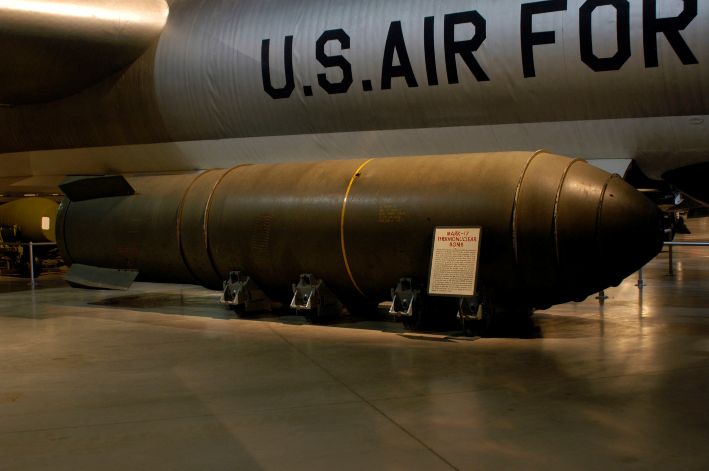by Michael H. Maggelet
A recent online article by the “Atomic Heritage Foundation” entitled “Broken Arrow Accidents” contains numerous errors about nuclear weapons accidents and continues to perpetuate a number of myths. While tackling each statement from the article would be time consuming, I’ve included just one for the time being. Look for a future article on this blog detailing the misstatements and disinformation from the AHF “Broken Arrow Accidents” article.
The piece mentions the May 27th, 1957 Broken Arrow at Kirtland AFB, New Mexico and reads in part “The incident was revealed to the public for the first time in the 1980s, after AHF Board member Robert S. Norris, then a research associate for the Natural Resources Defense Council, remarked that the Mark 17 ‘is possibly the most powerful bomb we ever made’ “. This statement is false, and given the amount of declassified material in the public domain over the decades, such disinformation highlights the need for fact checking. It should be noted that my co-author James Oskins, then a U.S. Air Force nuclear specialist (capsules) at Biggs AFB, Texas, did the prep for shipment on that weapon. The bomb did not contain a plutonium capsule as a standard safety precaution, and it was stored separately in the aircraft in a “birdcage” (storage container).

Mark 17 thermonuclear bomb, fielded from 1954 to 1957, with an approximate yield of 11 megatons (source- DOE Historical Films, photo- National Museum of the U.S. Air Force)
The accident, not incident, was discussed in the local press and national media at the time, and officially disclosed in the 1977 DOD “Narrative Summaries of Accidents Involving US Nuclear Weapons”.
The Mark 17 was the largest nuclear bomb fielded by the US, however its yield was certainly not the highest ever produced for the stockpile. A review of declassified films from DOE Historical Films, which are readily available, clearly shows a Mark 17 casing during proof tests, and it certainly was not the highest yield weapon in the inventory (much less the test series). Other weapons tested during the atmospheric test program in the mid ’50’s, not to mention declassified documents, show proof tests of significantly higher yields (not even approaching the 19, 20, 21, 24, and 50 megaton shots of the USSR).
In 1962, the US revealed we had a weapon in stockpile with a yield of about 25 megatons (Restricted Data Declassification Decision 8, p. 95). The Mark 17 was retired in 1957.